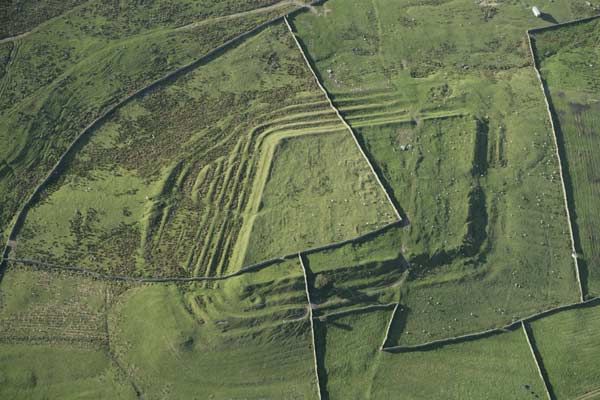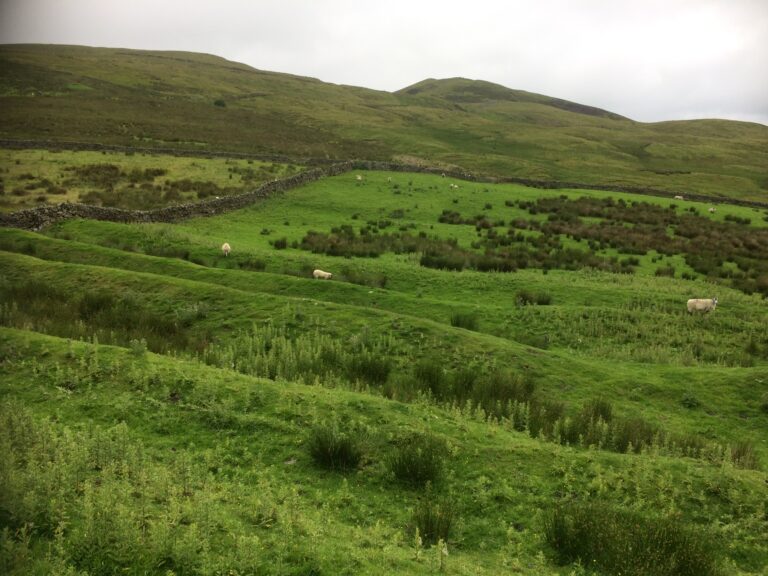Last year, 2019, was the 250th anniversary of the publication in 1769 of the Reverend John Wallis’s Natural history and antiquities of Northumberland – our earliest natural history book. Wallis was born in a now-demolished house inside the Roman fort known as Whitley Castle, Roman Epiacum, a few miles north of Alston in the North Pennines. It is a spectacular fort, one of the best-preserved in the whole Roman Empire. It is located on the Maiden Way, the Roman road from Hadrian’s Wall to Kirby Thore in the Valle of Eden. To celebrate the anniversary, and at the invitation of the owners of Castle Nook farm on whose land the fort lies, a group of NHSN botanists visited the fort in June to produce an inventory of the plants growing inside the fort and in its immediate surroundings.

We came up with a list of 49 flowering plant species, all of which might be expected in an area of upland semi-improved pasture near to modern farm buildings, but distinctly more numerous than is typical for such grassland in an area of less than two hectares. We decided that this would be caused by the variety of soil depth, drainage and stoniness of the complex fort ramparts and interior structures, together with the absence of obvious agricultural improvements. There would, of course, be additional species to find at other seasons.
There were 15 different species of grass. Herbs included pignut, marsh willowherb, cat’s-ear, bird’s-foot trefoil, mouse-ear hawkweed, germander speedwell and wild pansy. There was also bilberry.

Having exhausted the fort’s botany, we followed the Pennine Way, which skirts it, down to the Northumberland-Cumbria county boundary (the fort is in Northumberland), where a footbridge crosses Gilderdale Burn. Here there was limestone influence in fairy flax, some sedges, and an eyebright that we were too diffident to put a name to. While eating sandwiches we greeted grim-faced Pennine Way walkers, tramping northwards.

Back at the fort I explained a personal connection. It has never been proven, although widely assumed, that the fort was constructed to protect Roman lead and silver mining interests on Alston Moor. However, half-a-century ago, my Alston-based teen-age brother-in-law, together with a local engineer, were testing a sophisticated metal-detector (this was before the site became a scheduled ancient monument). They discovered a couple of lumps of galena (lead ore) in the immediate vicinity of the fort headquarters building. They kept the specimens, and my brother-in-law, when he emigrated to Australia in later life, took his specimen with him. But he kept in touch with local affairs, was aware of the renewed archaeological interest in the fort, and, returning for a holiday four years ago, brought the galena back with him. It was shown to a minerals expert, who was confident that it had been exposed to the elements for many thousands of years – i.e. long before Roman times – before finding its way to Epiacum. From this, we might draw one of two conclusions:-
- It had been picked up at the ground surface as a loose specimen in Roman times near a vein outcrop, somewhere on Alston Moor, by a prospector (either native or Roman) and brought to the fort to be assayed as to mining prospects. (When the galena specimen was assayed recently it was found to be quite rich in silver.)
- It had been collected by Wallis himself as a loose specimen, brought to his house in the fort, and lost when the house was demolished and the modern Castle Nook farmhouse built. The galena find site was close both to the headquarters building and to the site of Wallis’s house.
The galena was given to the Epiacum archaeologists. If the first conclusion is the correct one, it’s a little more evidence in favour of the mining function of Epiacum
Other extremely good Epiacum news has been the opening (before the virus struck), of a new farm shop and cafe at the site.
By Angus Lunn, NHSN Botany Section-Lead